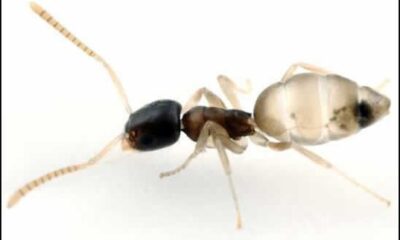Ants
Believe it or not, the sense of smell of an ant is just as good as that of a dog.
HOW TO IDENTIFY AN ANT PROBLEM? The first step to ridding yourself of an ant infestation is to identify the type of ant. Black ants and garden ants are usually quite straightforward, but other smaller species such as Pharaoh Ants and Ghost Ants are more difficult to identify and eradicate.
 Ants can lift and carry more than fifty times their own weight.
Ants can lift and carry more than fifty times their own weight.
 There are nearly as many species of ants (8,800) as there are species of birds (9,000) in the world.
There are nearly as many species of ants (8,800) as there are species of birds (9,000) in the world.
 The first ants you see in the house will be searching for new sources of food.
The first ants you see in the house will be searching for new sources of food.
 Environmental Pest Solutions will solve your problem
Environmental Pest Solutions will solve your problem

Black Ant or Garden Ant
Little black ant swarms are common from June to August, during which time they forage in trails and are frequently seen along pavements.
These small ants feed on grease, oil, meats, fruits, and vegetables materials such as corn and sweets. The workers also feed on other insects, and plant secretions.
Threats
Although little black ants have a stinger, it is too small and weak to be effective.

Pharaoh Ant
Pharaoh ants are around 2mm in length and yellow brown in colour.
They have the ability to get containers and sterile dressings. They feed on high protein and sweet foods. A single queen can produce over 3000 eggs in its life and a colony often consists of multiple queens which spread out when the nest is under attack.
Threats
Pharaoh ants infestations are a growing concern in apartments and healthcare facilities in Ireland. They are a potentially serious health pest in hospitals as they can transmit diseases between patients. These include salmonella, streptococcus and clostridium.

Ghost Ant
Ghost ants are very small ants with a pale abdomen hence the name “Ghost ant”.
Ghost ants nests in Europe tend to prefer warmer habitats due to their high moisture needs, therefore, often trails can lead to sinks, baths, toilets and showers. Indoor nests are generally located within wall voids, behind skirting boards, under and between cabinets and walls or in potted plants.
Threats
Not a major threat to anyone. They can however pass germs and be a general nuisance.
